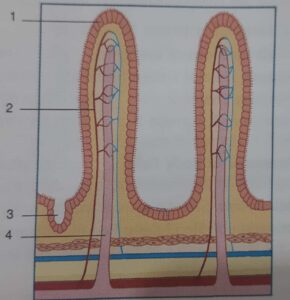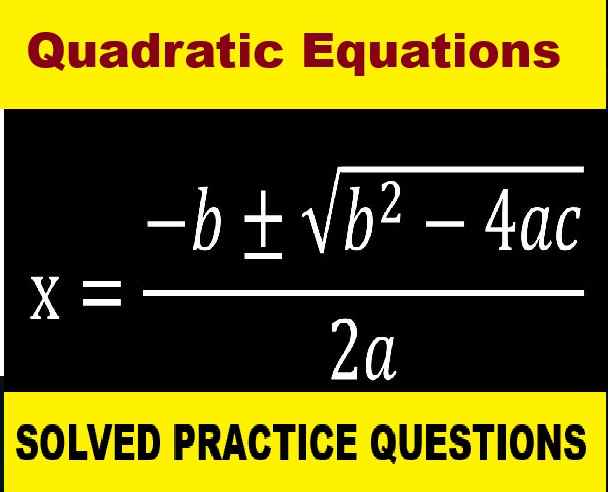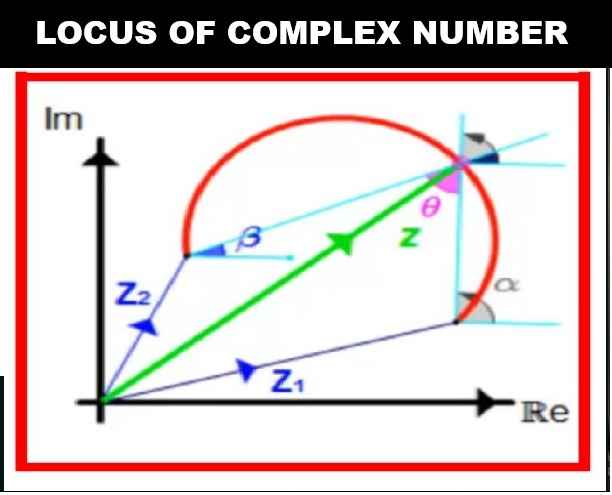Srijan Class-9 Digestive System ICSE Biology Solutions Ch-11. We Provide Solutions of Concept Check 1 to 3, Very Short Ans, Short Ans, Long Ans, Multiple Choice Type Application / Skill ( Figure Based ) Questions by expert teachers as per ICSE board guidelines. Visit official Website CISCE for detail information about ICSE Board Class-9.
Solutions of Srijan Class-9 Digestive System ICSE Biology Ch-11
| Board | ICSE |
| Publications | Srijan Publication |
| Subject | Biology |
| Class | 9th |
| writer | Veer Bala Rastogi |
| Chapter-11 | Digestive System |
| Topics | Solutions of Concept Check 1 to 3, Very Short Ans, Short Ans, Long Ans, MCQ, Application Skill Based Questions |
| Edition | 2021-2022 |
Concept Check 1 (Page 122)
(Ch-11 Digestive System Srijan ICSE Class-9 Biology Solutions )
State whether the following statements are true or false. If false, write the correct statement by changing the incorrect word/words only.
1. Food moves through esophagus by the peristaltic movements in the esophageal wall.
2. Duodenum is a part of large intestine.
3. Colon is a part or large intestine.
4. Gastric glands secrete HNO3 acid.
5. The opening of buccal cavity or oral cavity is called mouth.
6. Gullet is the opening of oesophagus and glottis is the opening of larynx and trachea.
7. The opening of trachea in pharynx is guarded by a muscular flap, called bicuspid valve.
8. The pyloric sphincter guards the opening of oesophagus into the stomach.
Answer:
1. True
2. False
3. True
4. False
5. True
6. True
7. False
8. False
Concept Check 2 (Page 126)
(Ch-11 Digestive System Srijan ICSE Class-9 Biology Solutions )
State whether the following statements are true or False. It false, write the correct statement by changing the incorrect word/words only.
1. All enzymes are chemically proteins.
2. Food remains in the stomach for 2 hours.
3. The waves of contraction of muscles in the wall of gut are called peristalsis.
4. Bile has enzyme lipase for the digestion of fats.
5. Teeth in buccal cavity assist in the mechanical digestion of food.
6. Enzymes regulate the metabolism of body.
7. Proteins are digested in small intestine by the action of enzyme pepsin.
8. Bile contributes to the digestion by the emulsification of fats.
9. Fine molecules produced by digestion of food are simple organic molecules.
Answer:
1. True
2. False
3. True
4. False
5. True
6. True
7. False
8. True
9. True
Concept Check 3 (Page 127)
(Ch-11 Digestive System Srijan ICSE Class-9 Biology Solutions )
Match the items the Column A with those which are most appropriate in Column B. You must rewrite the matching pairs
| Column A | Column B |
| 1. Glucose | (a) Sudan-III |
| 2. Starch | (b) Biuret test |
| 3. Protein | (c) Boiling with dil. HCI |
| 4. Fat | (d) Benedict’s test |
| 5. Sucrose | (e) Lugol’s iodine solution |
Answer:
| Column A | Column B |
| 1. Glucose | (d) Benedict’s test |
| 2. Starch | (e) Lugol’s iodine solution |
| 3. Protein | (b) Biuret test |
| 4. Fat | (a) Sudan-III |
| 5. Sucrose | (c) Boiling with dil. HCI |
A. VERY SHORT ANSWER TYPE, (Page 128)
Ch-11 Digestive System ICSE Class-9th Srijan Publishers Biology Solutions
1. Fill in the blanks with suitable words:
(a) The ………………. glands pour their secretion in the buccal cavity.
(b) Food passes down the oesophagus by ……………….. movements of its muscular wall.
(c) Carbohydrates and fats are ………………. yielding foods.
(d) Animal starch stored in muscles and liver is ………………
(e) ……………… and ……………. are examples of polysaccharides.
(f) Fats are compounds of …………… and ……………
Answer:
(a) Salivary
(b) Peristaltic
(c) Energy
(d) Glycogen
(e) Starch, cellulose
(f) Glycerol, Fatty acids
2. Give a proper term for the following:
(a) An enzyme that causes curdling of milk in alimentary canal.
(b) The juice released by the intestinal wall.
(c) Digestive action of bile on fats inside the duodenum.
(d) The process of capturing and intake of food.
(e) The finger-like processes from the mucous membrane of intestinal wall.
(f) The enzyme that helps in the digestion of cellulose.
(g) Inactive form of trypsin.
Answer:
(a) Renin
(b) Succus entericus
(c) Emulsification
(d) Nutrition
(c) Villi
(f) Cellulose
(g) Trypsinogen
3. Name one enzyme associated with the conversion of each of the following:
(a) Proteins (in stomach) –> Peptones + Proteoses
(b) Maltose (in ileum) –> Glucose
(c) Lactose (in ileum) –> Glucose + Galactose
(d) Fats –> Glycerol + Fatty acids
Answer:
(a) Pepsin
(Maltose
(c) Lactose
(d) Pancreatic lipase
4. Mark the odd-one out in each series:
(a) Gastric glands, salivary glands, tear glands, intestinal glands.
(b) Pepsin, trypsin, chymotrypsin, lipase.
(c) Dipeptidase, amino peptidase, enterokinase, carboxypeptidase.
(d) Bile salts, bile pigment, gall bladder, pancreas.
(e) Oesophagus, intestine, stomach, kidneys.
Answer:
(a) Tear gland
(b) Pepsin
(c) Enterokinase
(d) Pancreas
(e) Kidney
B. Short Answer Type Questions (Page129)
Ch-11 Digestive System ICSE Class-9th Srijan Publishers Biology Solutions
1. Answer these questions briefly:
(a) Which juice is secreted by the digestive glands of stomach?
Answer:-The digestive juice secreted by the stomach is the gastric juice.
(b) Which enzymes digest protein?
Answer: –Proteases. Also called peptidases, proteolytic enzymes, or proteinases , these digestive enzymes break down proteins into amino acids
(c) What are the end products of protein digestion?
Answer:–The end product of protein must be broken down into amino acids
(d) In which part of alimentary canal are fats digested?
Answer:–The majority of fat digestion happens once it reaches the small intestine. This is also where the majority of nutrients are absorbed. Your pancreas produces enzymes that break down fats, carbohydrates, and proteins.
(e) What are the inactive forms of pepsin and trypsin?
Answer:–The inactive form of pepsin, pepsinogen, is activated by HCl of the gastric juice, whilst the inactive form of trypsin, trypsinogen, is activated by an enzyme called enterokinase
(f) Where is bile juice formed?
Answer:–Bile is a fluid that is made and released by the liver and stored in the gallbladder. Bile helps with digestion. It breaks down fats into fatty acids, which can be taken into the body by the digestive tract
(g) In which part o the alimentary canal does the food become alkaline?
Answer:–Specifically, duodenum is the part of small intestine where it is most alkaline
(h) Which enzyme causes hydrolysis of fat into fatty acids and glycerol?
Answer:–Lipase is a type of enzyme known as a hydrolase and is responsible for catalyzing the hydrolysis of triglycerides (the substrate) into fatty acids and glycerol.
(i) Why is sucrose solution boiled with dil. HCI before testing tor sugar?
Answer:–Sucrose gives a positive test as it is a disaccharide consisting of fructose and glucose. Generally HCL is use to run this test. Note that Ketose get dehydrated faster and hence they give the test faster.
(j) Why does Benedict’s or Fehling’s solution give red-brown or orange-yellow precipitate with reducing sugar like glucose or fructose?
Answer:–When Benedict’s solution and simple carbohydrates are heated, the solution changes to orange red/ brick red. This reaction is caused by the reducing property of simple carbohydrates. The copper (II) ions in the Benedict’s solution are reduced to Copper (I) ions, which causes the color change
2. Give reason for the following:
(a) Man cannot digest cellulose fibers present in the food.
Answer:–Human cannot digest cellulose present in the food because the human digestive system doesn’t secrete any enzymes which digest cellulose
(b) Appendix and caecum are nonfunctional in all human beings.
Answer:–Although it acts as a storehouse for good bacteria. … It harbours bacteria which help in digestion of cellulose. The herbivores entirely dependent on plant material for nutrition have caecum. In case of human we don’t rely entirely on plant material for our food, so it is poorly developed or non-functional in humans
(c) Small intestine is the longest part of alimentary canal.
Answer:–Small intestine is the longest part of the alimentary canal because it is the main organ of absorption and digestion of food. The surface area of the small intestine gets increased because of the presence of villi which gives food plenty of time to break down properly
(d) All proteolytic enzymes are secreted in inactive form.
Answer:–all enzymes are secreted in inactive form to prevent any kind of reaction of the enzymes with other cells or tissues
(e) why are enzymes essential for all living organisms?
Answer:–enzymes are necessary for all living beings because enzymes are the chemical substances secreted by our body for the digestion of food. enzymes help to break down the complex food substances and convert them into simple substances which can be easily absorbed and utilised by our body
(f) Why are enzymes called biocatalysts ?
Answer:–The enzymes are called biocatalyst because it increases the speed of biochemical reaction in an organism. As, the enzymes accelerate the chemical reaction, without changing the state of equilibrium, it is known as the biocatalyst.
(g) Why is there a need for the process of digestion?
Answer:–Why is digestion important? Digestion is important for breaking down food into nutrients, which the body uses for energy, growth, and cell repair. Food and drink must be changed into smaller molecules of nutrients before the blood absorbs them and carries them to cells throughout the body.
(h) Why does intestinal wall bear so many villi?
Answer:–This is to increase surface area so more nutrients can be absorbed. This is also another reason why the small intestine is so long. … Villi/Microvilli = More surface area = more nutrients absorbed
(i) How is bile juice helpful in digestion, though it contains no digestive enzymes
Answer:–Bile is a digestive juice secreted by the liver. Although it does not contain any digestive enzymes, it plays an important role in the digestion of fats. … These break down large fat globules into smaller globules so that the pancreatic enzymes can easily act on them. This process is known as emulsification of fats
(j) why are pepsin and trypsin secreted in inactive form
Answer:–Pepsin enzyme is secreted by gastric glands of the stomach as inactive pepsinogen to protect the cells of these secretory glands from strong protein digesting action of the enzyme. The inactive form of the enzyme is activated by acidic pH of stomach lumen and the stomach wall is protected by mucus lining
C. Long Answer Type Questions (Page 129)
(Ch-11 Digestive System ICSE Class-9th Srijan Publishers Biology Solutions)
Q-1. Define the term digestion. List the food contents that need digestion.
Answer:–The food contents that need digestion are carbohydrates, proteins and lipids. Carbohydrates digestion happens in the mouth and in the intestine. Carbohydrates can be simple like sugars or complex like starch. The final product of the carbohydrate digestion is the glucose that is formed.
Q-2. What is pancreas Mention its role in digestion.
Answer:–During digestion, your pancreas makes pancreatic juices called enzymes. These enzymes break down sugars, fats, and starches. Your pancreas also helps your digestive system by making hormones. These are chemical messengers that travel through your blood
Q-3. Name the parts of alimentary canal and major digestive glands with their location.
Answer:-Alimentary canal comprises of following parts (i) Mouth (ii) Pharynx (iii) Oesophagus (iv) Stomach (v) Small intestine (vi) Large intestine (vii) Rectum (viii) Anus Digestive glands include (i) Salivary glands are situated just outside the buckle cavity and secrete salivary juice into it.
Q-4. Name the enzymes of intestinal juice and the end products of their action during digestion.
Answer :- The proteolytic enzymes of the pancreas, i.e. trypsin, chymotrypsin and carboxy polipeptidase, which are also secreted in inactive forms, continue protein digestion. The end products of protein digestion are amino acids, produced by the action of intestinal and mucosal dipeptidases
D. Multiple Choice Questions (Page 129)
(Ch-11 Digestive System ICSE Class-9th Srijan Publishers Biology Solutions)
Choose the correct answer.
1. Water from the digested food is mainly absorbed by
(a) Rectum
(b) Stomach
(c) Colon
(d) Duodenum
Answer: (d) Duodenum
2. Pylorus is an opening between
(a) Intestine into rectum
(b) Mouth cavity into oesophagus
(c) Stomach into intestine
(d) Intestine into rectum
Answer: (c) Stomach into intestine
3. Gastric juice contains
(a) HCI and pepsin
(b) Amylopsin and pepsin
(c) Pepsin and trypsin
(d) HCI and trypsin
Answer: (a) HCI and pepsin
4. Fat is broken down to fatty acids and glycerol by
(a) Lipase
(b) Amylase
(c) Trypsin
(d) Bile salt
Answer: (a) Lipase
5. In man, digestion of starch start’s in
(a) Buccal cavity
(b) Stomach
(c) Oesophagus
(d) Duodenum
Answer: (a) Buccal cavity
E Application /Skill-based Questions (Page 129)
(Ch-11 Digestive System ICSE Class-9th Srijan Publishers Biology Solutions)
The given diagram shows the internal structure of a villus.

(a) Label the parts 1-4.
(b) Give the functions of part marked 1.
(c) What is the role of lacteal?
(d) Name the glands present at the junction of two villi What is their function?
Answer:
(a)
1. Epithelial lining
2. Arteriole
3. Intestinol gland
4. Lacteal
(b) Absorbing useful substance into the body and restricting the entry of harmful substance.
(c) To absorbs dietary facts in the villi of the small intestine.
(d) Brunner’s gland present at the junction of two villi.
Thanks



I got my exam paper and half of the answer is wrong I don know when I come back and re chack my answer scripts is all right but I don know why my number cut
send image of answer sheet at 8948221203